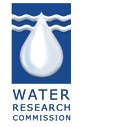Workshop 5 (October 29-30, 2012):
Participating Organizations:
Hydrogeodesy Tutorial (4 hours, day and time to be determined):
|
Wednesday, October 31, 2012, 10:40 to 16:00 |

|
Hydrogeodesy Tutorial: Using Hydrogeodetic Data for Water Budget Studies on Local to River Basin ScalesSpecial Session at the |

 |  |
See the Programme of the Tutorial
Introduction
In the frame of the program of the WaterNet Symposium, the IGCP 565 Project organized a Tutorial Session on hydrogeodesy jointly with the Water Cycle Community of Practice of the Group on Earth Observations (GEO), the Global Geodetic Observing System (GGOS), and the Water Research Commission (WRC), WRC Project No: K5/1851. The tutorial with a duration of 4 hours focus on the practical use of hydrogeodetic data for regional water cycle studies and water management.
The tutorial took place on Wednesday, October 31, 2012 from 10:40 to 16:00 in the Cypress Room.
Conveners of the Tutorial
Andiswa Mlisa, Jay Famiglietti, Jean-Marie Kileshye Onema, Norman Miller, Hans-Peter Plag, Ben Zaitchik.
Objective and Purpose of the Tutorial
The objective of the session was to introduce in particular young scientists involved in hydrologic studies to hydrogeodesy and to enable them to discover and use hydrogeodetic data and tools. The session had four tutorials presented by invited experts in the field and also include time for questions from the participants.
The goal of this special session was to demonstrate the use of hydrogeodetic data for studies related to the water cycle and budget at local to river basin scales. The special session demonstrated discovery of, and access to, the data, provided background on the applicability of the different datasets made available by research groups, and considered potential applications of the available data products. The special session also review the current status of land surface schemes for terrestrial water storage and transfer processes, described inter-model differences, including weaknesses and strengths. In areas where traditional hydrological observations are sparse, geodetic observations are of high value as observational constraints to such models. The session presented approaches to the use of geodetic observations in combination with local hydrological models and regional to global land surface models with water storage schemes, and to assess the improvements that can be achieved through such combinations. The relevance of hydrogeodetic data products for regional water management was considered.
Motivation
The IGCP 565 Project “Developing the Global Geodetic Observing System into a Monitoring System for the Global Water Cycle” has been organizing a sequence of five annual workshops, which successively addressed scientific questions related to the development of products for regional water management. These workshops have emphasized the importance of demonstrating the use of hydrogeodetic data to a wide range of Earth scientists involved in studies of the water cycle at all spatial and temporal scales. Currently, regional water management is hampered by a lack of sufficient observations of the terrestrial water storage, above as well as below the land surface. The dramatically increased accuracy of geodetic techniques over the last three decades provides great potential for more accurate measurement of water mass as it is is stored and cycles from one reservoir to another. Access to hydrogeodetic data products and understanding the applicability of these products were identified as key obstacles in the wider use of hydrogeodetic data for hydrologic studies. The 13th WaterNet symposium presented an appropriate platform for reaching out to African water researchers and to inform them about the potential of hydrogeodesy for their work. We were particularly interested in reaching out to young scientists. Therefore, we organized a tutorial session introducing the participants to hydrogeodesy and demonstrating to them how to find, access and use the data products for their work.
Outcomes
The main outcome is a first step towards capacity building in hydrogeodesy, as well as a networking between the participants (both presenters and audience), which could lead to the development of a hydrogeodetic community in Africa with follow-on interaction between the experts and scientists starting to utilize hydrogeodetic tools and data. For a summary of the tutorial, see the presentation given in the daily summary session.
Programme
Programme
| 1040 - 1300: | Block 1: Theory, Data and Use |
| 1040 - 1200: | Hans-Peter Plag: Introduction to Hydrogeodesy (abstract, presentation) |
| 1200 - 1300: | Norman Miller: A Brief Tutorial on Data Assimilation with Hydrologic Applications (abstract, presentation) |
| 1300 - 1400: | Lunch Break |
| 1400 - 1600: | Block 2: Supporting the Users |
| 1400 - 1445: | Andiswa Mlisa: Earth Observation Methodologies for Groundwater Exploration and Monitoring (abstract, presentation) |
| 1445 - 1545: | Andiswa Mlisa: Earth Observation for Water Management, a GEONETCab toolkit (abstract, presentation) |
| 1545 - 1600: | All: Discussion |
In case of problems, mail to info@igcp565.org.